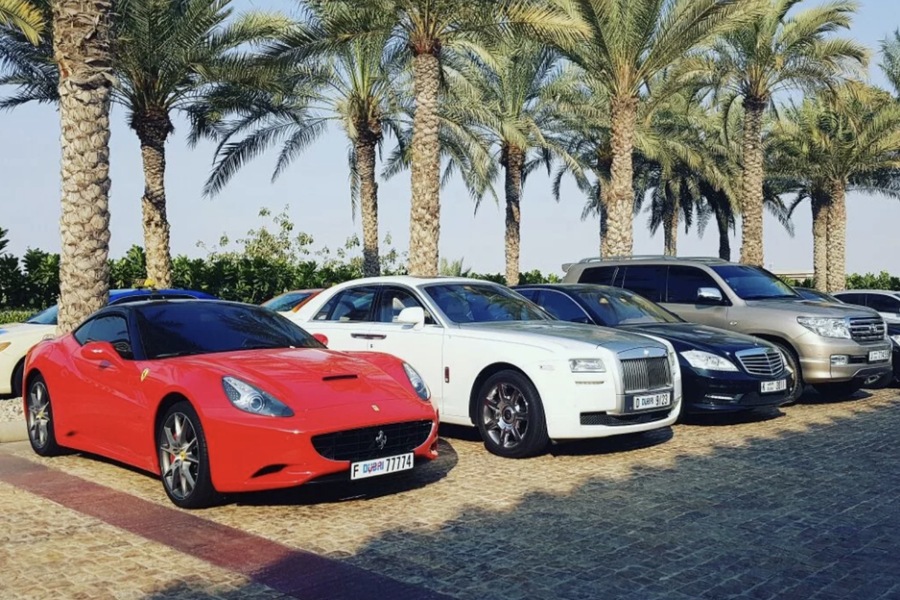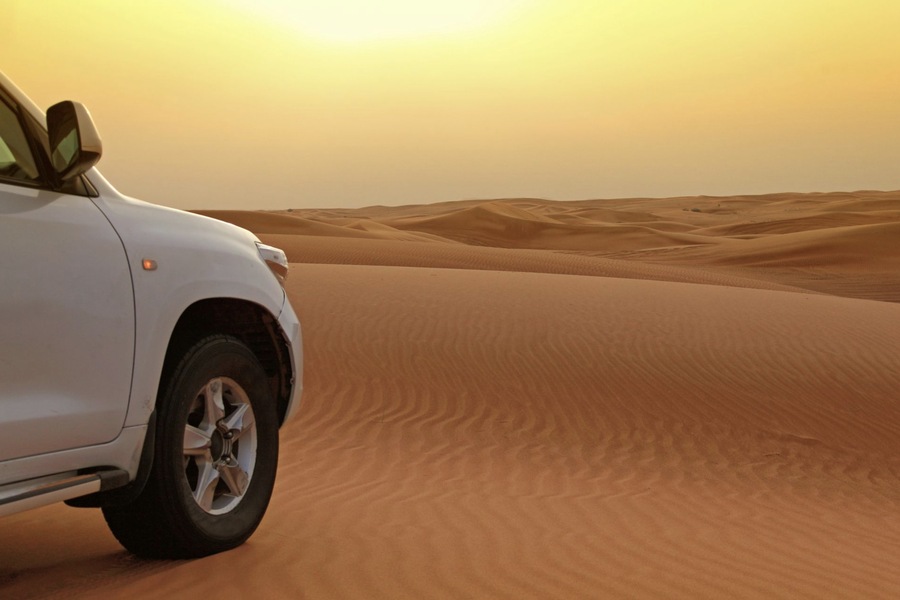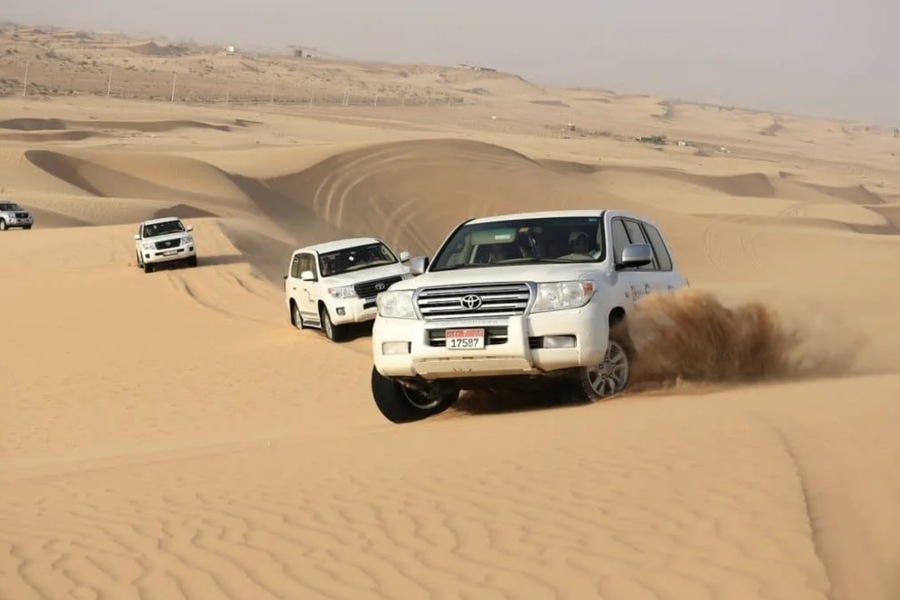The United Arab Emirates (UAE), a popular global destination known for its vibrant economy and luxury lifestyle, attracts millions of tourists every year. This influx of visitors impacts many sectors, including hospitality, real estate, and the automotive market. One area that often goes unnoticed is how tourism influences car prices in UAE. The automotive sector in Dubai and across the UAE reflects the country’s economic strategies and caters to both residents and the tourist population. This article will examine how tourism shapes car pricing trends, the demand for rental and luxury vehicles, and the broader economic factors connecting these markets.
Page Content
The Role of Tourism in UAE’s Economy and Automotive Market
Tourism contributes significantly to the UAE’s economy, representing around 11% of the country’s GDP as of recent reports from the UAE Ministry of Economy. Dubai, with its position as a luxury destination and shopping hub, is particularly attractive to tourists seeking convenience, high-end experiences, and ease of travel. As a result, tourism has a substantial impact on the demand for vehicles, particularly in Dubai. Rental car agencies, luxury car showrooms, and dealerships adjust their inventories and prices to cater to seasonal tourist influxes, affecting car pricing trends across the region.
Seasonal Fluctuations in Tourism and Car Demand
The UAE experiences seasonal variations in tourism, with peak periods occurring from November to April, when temperatures are more moderate. During these months, the demand for rental cars rises sharply as tourists prefer the convenience of self-guided travel to explore various attractions in Dubai and other emirates. This seasonal demand can create temporary increases in rental prices, which also trickle down to the sale market, as agencies replenish their fleets with newer models. The pattern of high seasonal demand prompts rental agencies to frequently rotate stock, influencing overall car prices due to shifts in supply.
Growth in the Luxury Car Market Due to High-End Tourism
Tourists visiting Dubai and the UAE often seek luxurious experiences, which extends to their transportation choices. The country has established itself as a luxury car capital, featuring some of the world’s most high-end brands, including Rolls-Royce, Bentley, and Ferrari. Many high-net-worth tourists and business travelers prefer renting luxury vehicles, leading to increased demand for high-end models. This demand keeps prices for luxury cars competitive but also elevated, as dealers and rental companies need to maintain an ample supply of premium vehicles. For tourists, driving a luxury car becomes part of the UAE experience, contributing to sustained interest and stable pricing within this market segment.
The Impact of Tourism on Rental Car Prices and Fleet Management
The UAE’s car rental industry is one of the fastest-growing sectors within the automotive market, supported by a steady stream of tourists and short-term residents. Rental agencies often adjust their pricing structures based on tourism forecasts and anticipated demand. Fleet rotation is frequent, with rental companies updating their fleets with new models to meet the quality expectations of international visitors. This dynamic creates a secondary market for used cars as rental agencies regularly sell vehicles to maintain modern, appealing fleets. Consequently, car prices in the UAE are indirectly influenced by the constant availability of high-quality used vehicles from rental agencies.
The Influence of Short-Term Leasing and Flexible Mobility Solutions
As tourism grows, short-term leasing has gained popularity, offering more flexible mobility options for visitors. The UAE’s automotive industry has responded with monthly leasing programs designed to meet the needs of extended-stay tourists, particularly those on business trips. These leasing arrangements make high-quality vehicles accessible for extended periods without a long-term commitment. Although the short-term lease rates are competitive, they often reflect the costs associated with maintaining newer models and covering insurance, taxes, and maintenance. Thus, the demand for flexible leasing directly contributes to the pricing dynamics in the new and used car markets.
The Secondary Market and Availability of Ex-Rental Cars
Tourism-driven demand has a significant influence on the secondary market, particularly for ex-rental vehicles. Rental companies sell cars within 1-2 years to meet the expectations of tourists, ensuring a steady supply of nearly-new used vehicles available for purchase. As ex-rental cars enter the market, they offer a more affordable alternative to new cars, driving prices down for second-hand vehicles. This trend benefits local buyers, who gain access to high-quality, well-maintained cars at lower prices. The availability of these vehicles can influence car prices in the UAE by offering competitive pricing on popular models that have been lightly used.
Economic Influence: Tourism and Employment in the Automotive Sector
The automotive industry in the UAE benefits directly from tourism, creating job opportunities within car rental companies, dealerships, and luxury showrooms. The sector also supports a wide range of auxiliary services, from maintenance and repairs to chauffeur services and vehicle detailing. This economic interdependence reinforces the stability and growth of the automotive market. With a steady demand fueled by tourism, car dealerships and rental agencies can maintain higher turnover rates, which in turn supports stable or slightly elevated pricing. The employment generated in the automotive sector reflects the broader economic impact tourism has on car pricing and availability.
Investment in Infrastructure Supporting Tourism and Automotive Demand
The UAE government has invested heavily in infrastructure to accommodate rising tourism, with projects like the Dubai International Airport expansion and improved road networks. These developments support increased mobility, making it easier for tourists to travel within and between emirates. With efficient roads and accessible rental options, tourists are encouraged to explore more, generating a reliable demand for cars. Infrastructure projects facilitate growth in the automotive sector by making car rentals a feasible option for a greater number of tourists. This consistent demand keeps the car rental market stable and affects the turnover rates that influence car pricing.
Marketing Strategies and Brand Positioning for Tourists
Tourism affects not only car prices but also the marketing strategies and brand positioning of vehicles in the UAE. Rental agencies and dealerships often tailor their advertising and promotions to appeal to international tourists, especially during major events like the Dubai Shopping Festival. High-end dealerships attract tourists with marketing that highlights luxury, exclusivity, and high performance, driving interest in expensive models. As marketing aligns with the preferences of wealthy tourists, the focus on premium models can help sustain higher prices in this category. This brand positioning strategy makes luxury cars a significant part of the UAE’s automotive landscape.
How Major Events Influence Car Demand and Pricing
The UAE hosts numerous global events each year, such as the Dubai World Cup, Formula 1 Abu Dhabi Grand Prix, and Expo 2020. These high-profile events draw international visitors, resulting in increased demand for rental and luxury vehicles. Car rental companies often increase rates during these events to capitalize on the surge in demand. This surge extends to vehicle sales as well, as both residents and tourists seek high-end cars for these prestigious occasions. The recurring high demand around major events underscores the unique relationship between tourism and car pricing, as short-term demand spikes contribute to long-term market adjustments.
The Role of Online Booking Platforms in Meeting Tourist Demand
Online booking platforms have become an essential tool for tourists seeking rental cars in the UAE. Digital platforms allow travelers to compare car options, prices, and availability before they arrive, making it easier to plan transportation. As tourists increasingly rely on online booking platforms, car rental companies adjust pricing algorithms to reflect real-time demand. These platforms also make it easier to access luxury and specialty vehicles, further fueling demand among affluent tourists. The streamlined process of booking through these platforms enables higher fleet utilization rates and sustains the steady demand that impacts car prices across the UAE.
Conclusion
The UAE’s tourism sector is expected to grow, especially with anticipated mega-projects such as new theme parks and entertainment centers. This growth suggests a sustained demand for rental and luxury cars as part of the tourist experience. Future trends may also see increased adoption of electric vehicles within rental fleets, depending on tourist demand for environmentally friendly options. The alignment between tourism growth and automotive demand hints at continued pricing stability, with incremental increases in line with broader economic indicators. As long as tourism remains a central aspect of the UAE’s economy, the automotive market will likely continue adjusting to meet evolving demands




